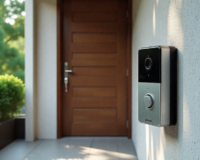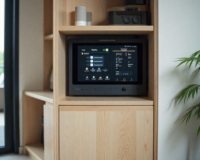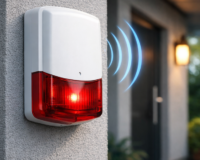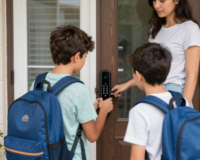In today’s rapidly changing educational environment, ensuring the safety and security of students, staff, and visitors has become a top priority for schools and educational institutions. As part of a comprehensive security strategy, intercom systems have emerged as a vital tool for enhancing communication, streamlining daily operations, and enabling rapid emergency response. The integration of modern intercom systems into schools is not just a trend but a necessity, addressing the growing need for efficient communication and ensuring a safer learning environment.
This article explores the increasing use of intercom systems in educational settings, focusing on their role in security, communication, and emergency response. It also highlights the benefits of these systems, discusses different types of intercom systems available, and provides insights into best practices for implementation in schools and educational institutions.
Table of Contents
ToggleThe Role of Intercom Systems in Educational Settings

Intercom systems serve multiple functions within schools and educational institutions. Their primary roles include enhancing security, improving communication, and facilitating efficient emergency response. Let’s delve into each of these roles to understand why intercom systems have become indispensable in educational settings.
1. Enhancing Security
Security is a critical concern for any educational institution. Intercom systems contribute significantly to creating a secure environment by controlling access to school premises, monitoring visitor entry, and preventing unauthorized access.
- Access Control: Intercom systems allow schools to manage who enters the premises. Typically installed at main entrances, intercom systems enable staff to verify the identity of visitors before granting them access. This controlled access is particularly important in preventing unauthorized individuals from entering the school, thereby reducing the risk of potential threats.
- Visitor Management: Modern intercom systems often include video capabilities, allowing for visual identification of visitors. This feature enhances security by enabling staff to assess potential risks before allowing entry. Some advanced systems also integrate with visitor management software, providing a comprehensive log of visitors, which is essential for maintaining security records.
- Monitoring and Surveillance: Intercom systems can be integrated with CCTV cameras to provide real-time monitoring of different areas within the school. This integration allows security personnel to observe and communicate with individuals in various locations, ensuring a prompt response to any suspicious activity.
2. Improving Communication
Effective communication is crucial in any educational setting, and intercom systems play a pivotal role in facilitating clear and timely communication between staff, students, and administrators.
- Daily Announcements: Intercom systems are widely used for making school-wide announcements, including updates on schedules, events, or important reminders. This ensures that all students and staff receive the same information simultaneously, promoting a well-coordinated school environment.
- Classroom Communication: Intercom systems enable direct communication between the administration and individual classrooms. This is particularly useful for conveying important messages to teachers without disrupting the entire school. Teachers can also use the intercom to request assistance or report issues directly to the office.
- Coordination During Events: During school events such as assemblies, sports days, or parent-teacher meetings, intercom systems help coordinate activities by allowing instant communication between different areas of the school. This ensures that events run smoothly and efficiently.
3. Facilitating Emergency Response
In the event of an emergency, whether it’s a natural disaster, fire, or security threat, the ability to communicate quickly and effectively is paramount. Intercom systems are integral to emergency preparedness and response strategies in schools.
- Emergency Alerts: Intercom systems enable immediate broadcasting of emergency alerts to the entire school or specific areas. This ensures that all students and staff are informed of the situation and can take appropriate action, whether it’s evacuating the building, initiating a lockdown, or following other safety protocols.
- Crisis Management: During a crisis, intercom systems provide a direct line of communication between school administrators, security personnel, and emergency responders. This allows for real-time updates and coordinated responses, which are crucial for managing the situation effectively.
- Evacuation Procedures: Intercom systems guide students and staff during evacuations by providing clear instructions on the safest routes and assembly points. The ability to communicate with multiple areas simultaneously helps prevent confusion and ensures a smooth evacuation process.
Types of Intercom Systems for Schools
When selecting an intercom system for an educational institution, it’s important to choose the right type based on the specific needs and layout of the school. Here are the main types of intercom systems commonly used in schools:
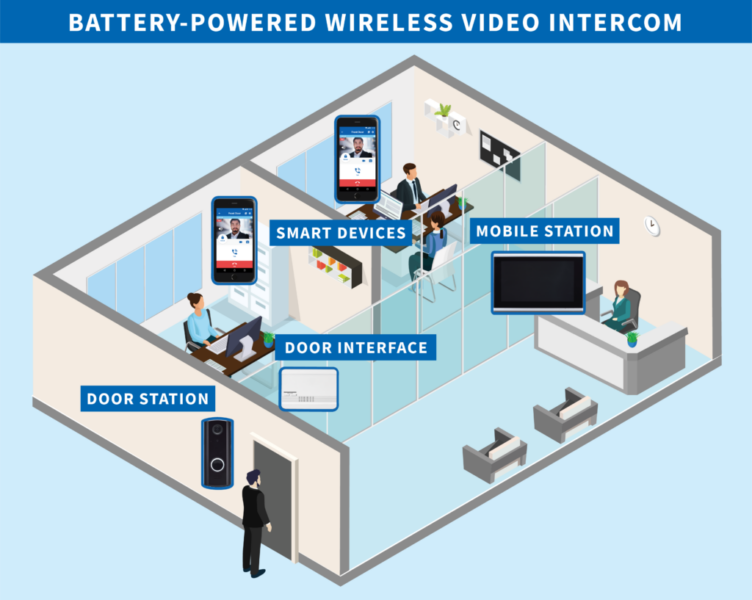
1. Wired Intercom Systems
Wired intercom systems are the traditional choice for schools and are known for their reliability and durability. These systems use physical cables to connect the intercom stations, providing a stable communication link.
Advantages:
- Reliability: Wired systems offer consistent communication quality without interference from external signals.
- Security: The hard-wired connection is less susceptible to hacking or unauthorized access, making it a secure option for schools.
- Durability: Wired systems are generally more robust and can withstand harsh conditions, which is ideal for long-term use in educational settings.
Disadvantages:
- Installation Complexity: Installing a wired system can be time-consuming and disruptive, especially in existing buildings where retrofitting is required.
- Limited Flexibility: Once installed, it is difficult to relocate or expand the system without significant work.
2. Wireless Intercom Systems
Wireless intercom systems use radio frequencies, Wi-Fi, or Bluetooth to transmit communication signals, offering greater flexibility in installation and use.
Advantages:
- Ease of Installation: Wireless systems are easier and faster to install, as they do not require running cables through walls or ceilings.
- Flexibility: These systems can be easily expanded or relocated, making them suitable for dynamic school environments.
- Modern Features: Wireless systems often come with advanced features such as smartphone integration, remote access, and cloud-based management.
Disadvantages:
- Signal Interference: Wireless systems may experience interference from other electronic devices or physical obstructions, which can affect communication quality.
- Security Concerns: Wireless signals can be vulnerable to hacking, so robust encryption and security protocols are essential.
Video Intercom Systems
Video intercom systems are becoming increasingly popular in schools due to their ability to provide visual identification in addition to audio communication. These systems often integrate with CCTV cameras to enhance security.
Advantages:
- Enhanced Security: The ability to see who is at the door before granting access adds an extra layer of security.
- Visitor Verification: Video intercoms allow staff to visually verify visitors before allowing entry, reducing the risk of unauthorized access.
- Integration with Other Systems: Video intercoms can be integrated with existing security systems, providing a comprehensive approach to school safety.
Disadvantages:
- Higher Cost: Video intercom systems are generally more expensive than audio-only systems due to the additional hardware and installation requirements.
- Bandwidth Requirements: These systems require sufficient network bandwidth to transmit video signals, which may necessitate upgrades to the school’s IT infrastructure.
2.4 IP-Based Intercom Systems
IP-based intercom systems utilize internet protocol (IP) networks to transmit communication signals, offering a modern and scalable solution for schools.
Advantages:
- Scalability: IP-based systems can easily be scaled to accommodate additional intercom stations or new features as the school’s needs grow.
- Remote Management: These systems can be managed remotely via web interfaces or mobile apps, providing administrators with greater control and flexibility.
- Integration Capabilities: IP intercoms can be integrated with other IP-based systems, such as security cameras, access control, and public address systems, creating a unified communication platform.
Disadvantages:
- Dependence on Network Infrastructure: IP intercoms rely on the school’s network infrastructure, so any issues with the network can affect communication.
- Complex Installation: Setting up an IP-based system may require specialized knowledge and equipment, leading to higher installation costs.
4. Best Practices for Implementing Intercom Systems in Schools
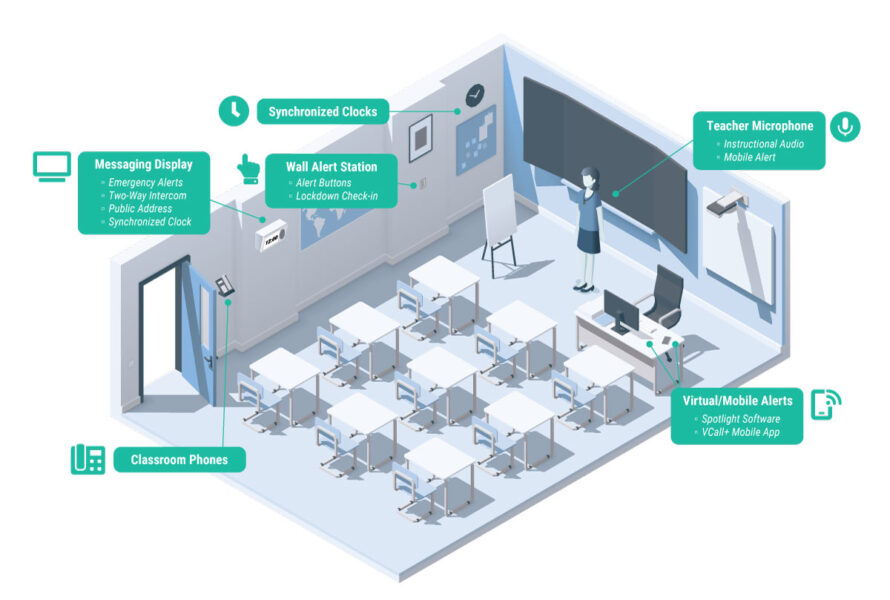
Implementing an intercom system in a school requires careful planning and consideration to ensure that the system meets the institution’s specific needs and enhances security and communication effectively. Here are some best practices for implementing intercom systems in educational settings:
1. Assess the School’s Needs
Before selecting and installing an intercom system, it’s important to conduct a thorough assessment of the school’s needs. This includes evaluating the size of the campus, the number of buildings, the level of security required, and the specific communication needs of the staff and students.
- Security Requirements: Consider the level of security needed for the school. For example, schools in high-risk areas may require more advanced systems with video capabilities and integration with other security measures, such as access control and alarm systems.
- Communication Needs: Determine how the intercom system will be used for daily communication. Schools with large campuses or multiple buildings may require a more complex system with multiple intercom stations and zones.
- Budget Considerations: While it’s important to invest in a reliable and effective intercom system, schools must also consider their budget. It’s advisable to prioritize essential features while exploring options that offer scalability and future upgrades.
2. Choose the Right Type of Intercom System
Based on the assessment, choose the type of intercom system that best suits the school’s needs. Consider factors such as the reliability of wired systems versus the flexibility of wireless systems, the benefits of video capabilities, and the scalability of IP-based systems.
- Wired vs. Wireless: For schools with existing infrastructure, wired systems may offer greater reliability and security. However, if flexibility and ease of installation are priorities, a wireless system may be more appropriate.
- Video Integration: If security is a primary concern, consider a video intercom system that allows for visual verification of visitors. This can be particularly important for schools with multiple entry points or in urban areas with higher security risks.
- Scalability: Choose a system that can be easily expanded as the school’s needs grow. IP-based systems are often the most scalable, allowing for the addition of new intercom stations or features with minimal disruption.
3. Plan for Installation
Proper planning and execution of the installation process are crucial for ensuring that the intercom system operates effectively and integrates seamlessly with the school’s existing infrastructure.
- Professional Installation: It’s advisable to hire professional installers with experience in setting up intercom systems in educational settings. This ensures that the system is installed correctly, minimizing the risk of technical issues or security vulnerabilities.
- Minimize Disruption: Plan the installation to minimize disruption to school activities. This may involve scheduling the installation during school holidays or after hours.
- Integration with Existing Systems: If the school already has other security or communication systems in place, ensure that the intercom system is compatible and can be integrated smoothly. This may require coordination with the providers of other systems, such as CCTV or access control.
4. Train Staff and Students
Once the intercom system is installed, it’s important to provide training to staff and students on how to use it effectively. This ensures that everyone understands how to operate the system and respond appropriately in different situations.
- Staff Training: Train staff on how to use the intercom system for daily communication, making announcements, and managing emergencies. Provide clear guidelines on when and how to use the system, including protocols for emergency situations.
- Student Awareness: Educate students on the purpose of the intercom system and how it contributes to their safety. Ensure that they understand the importance of following instructions delivered through the intercom, especially during emergencies.
- Regular Drills: Conduct regular drills to practice the use of the intercom system in emergency scenarios. This helps reinforce the procedures and ensures that everyone is prepared to respond quickly and effectively in real situations.
5. Regular Maintenance and Updates
To ensure the ongoing reliability and effectiveness of the intercom system, regular maintenance and updates are essential. This includes checking the system for any technical issues, ensuring that all components are functioning correctly, and updating the system as needed to maintain security and compatibility.
- Routine Inspections: Schedule routine inspections of the intercom system to identify and address any potential issues before they become serious problems. This may involve testing the system’s communication quality, checking connections, and ensuring that all intercom stations are operational.
- Software Updates: For IP-based and wireless intercom systems, ensure that the software is regularly updated to protect against security vulnerabilities and to take advantage of new features or improvements.
- System Upgrades: As technology evolves and the school’s needs change, consider upgrading the intercom system to incorporate new functionalities or to expand its capabilities. This may include adding more intercom stations, integrating with new security systems, or enhancing the system’s features.
Conclusion
The increasing use of intercom systems in schools and educational institutions reflects the growing recognition of their importance in enhancing security, improving communication, and facilitating effective emergency response. As schools continue to prioritize the safety and well-being of their students and staff, the adoption of advanced intercom systems will play a crucial role in creating secure and well-managed learning environments.
By carefully assessing their needs, choosing the right type of intercom system, planning for proper installation, and ensuring ongoing maintenance, schools can maximize the benefits of their intercom systems. Ultimately, the integration of these systems into the daily operations of educational institutions will contribute to a safer, more efficient, and better-coordinated school environment, where both learning and safety are prioritized.



